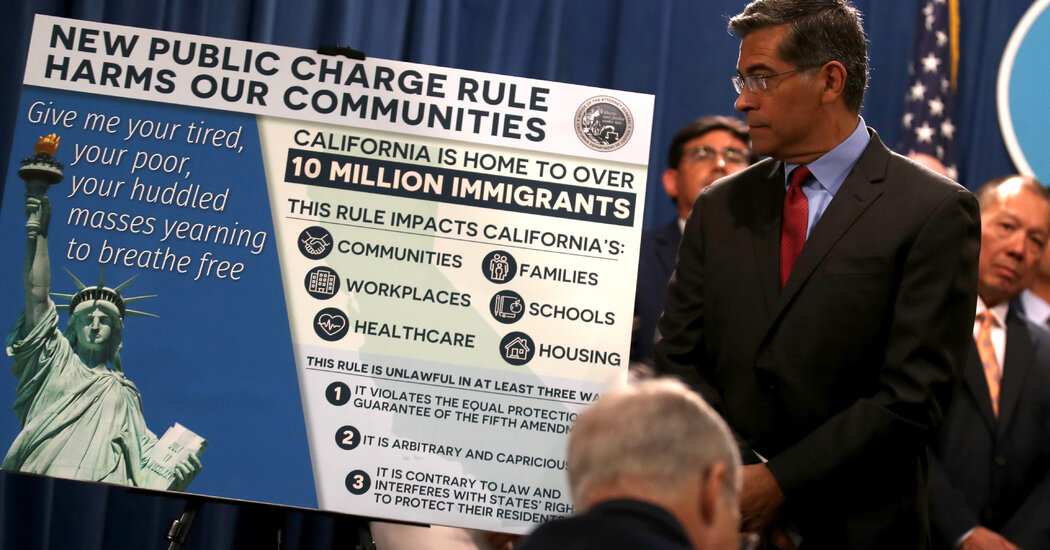WASHINGTON — The Supreme Court on Wednesday dismissed an appeal from several states led by Republicans that had sought to step in to defend a Trump-er
WASHINGTON — The Supreme Court on Wednesday dismissed an appeal from several states led by Republicans that had sought to step in to defend a Trump-era immigration policy that the Biden administration has abandoned.
The court’s decision was one sentence long and said only that the states’ petition seeking review was “dismissed as improvidently granted.”
In a concurring opinion, Chief Justice John G. Roberts Jr. said the case had presented “a host of important questions.” But he added that a “mare’s nest” of procedural issues stood in the way of a clean resolution of those questions.
Chief Justice Roberts stressed that the dismissal “should not be taken as reflective of a view” on how the questions should be answered, and he suggested that the court may resolve them in another context.
Justices Clarence Thomas, Samuel A. Alito Jr. and Neil M. Gorsuch joined the chief justice’s concurring opinion.
The Trump-era policy at issue in the case revised the “public charge” rule, which allows officials to deny permanent legal status, also known as a green card, to immigrants who are likely to need public assistance. In the past, only substantial and sustained monetary help or long-term institutionalization counted, and fewer than 1 percent of applicants were disqualified on public-charge grounds.
The Trump administration’s revised rule broadened the criteria to include government programs like Medicaid, food stamps and other “noncash benefits providing for basic needs such as housing or food” used in any 12 months in a 36-month period. Use of two kinds of benefits in a single month counted as two months, and so on.
The policy was challenged in lawsuits around the nation, and several federal judges blocked it. But in January 2020, by a 5-to-4 vote, the Supreme Court revived the policy while appeals moved forward.
After President Biden took office, his administration decided not to defend the policy in court. At the administration’s request, the Supreme Court dismissed a separate appeal that had reached the justices, and lower federal courts took similar actions.
Relying on a nationwide ruling against the policy from the federal court in Illinois and without following administrative law procedures, the Biden administration then revoked the policy. (It has since started the process of issuing its own version.)
Arizona and a dozen other states sought to intervene in a case before the U.S. Court of Appeals for the Ninth Circuit, in San Francisco, to defend the Trump-era rule, saying that the Biden administration’s actions amounted to legal gamesmanship meant to ensure there would be no definitive ruling on whether the old policy was lawful. A divided three-judge panel of the appeals court denied the states’ motion.
When the justices heard arguments in February in the case, Arizona v. City and County of San Francisco, No. 20-1775, they faulted both the administration’s approach and the states’ response.
The Trump Investigations
Numerous inquiries. Since Donald J. Trump left office, the former president has been facing civil and criminal investigations across the country into his business dealings and political activities. Here is a look at the notable inquiries:
“It’s really quite a license for collusive action,” Chief Justice Roberts said of the administration’s strategy, which included accepting a court ruling against the policy and opposing the states’ attempts to intervene to argue in its favor.
Justice Elena Kagan questioned the convoluted litigation strategy that the states pursued to try to revive the Trump administration’s policy. It was a “quadruple bank shot,” she said, one that seemed to include trying to intervene in the Ninth Circuit in the hope of undoing a ruling in a federal trial court in Illinois so the states could file a new suit in federal court in Washington.
In his concurring opinion on Wednesday, Chief Justice Roberts continued to express skepticism about the Biden administration’s litigation strategy.
“These maneuvers raise a host of important questions,” he wrote. “The most fundamental is whether the government’s actions, all told, comport with the principles of administrative law.”
www.nytimes.com
